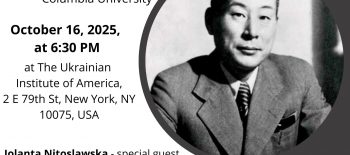Thursday, March 1, 2018 – Thursday, March 15, 2018
For many soldiers, the dissolution of the Home Army in 1945 did not mean the end of the struggle for a just cause. On the contrary, the Red Army’s occupation of the territories of the Republic of Poland, resulting in the disbanding of the Polish Underground State, was the beginning of a new battle for a free Poland and its good name as well as, in time, a struggle to preserve historical truth.
“The war is not over […]. We will never agree to a different life, except in a completely sovereign, independent and just Polish State […]. I give you my last order. Continue your work and activities in the spirit of regaining full independence of the state”, the last commander of the Home Army, General Leopold Okulicki wrote in a farewell order to Home Army officers and soldiers in January 1945.
The first structures in the East, created in the event of the occupation of Polish territories by the Red Army, were established in 1943. The year 1945 brought with it such intense armed resistance to the violence imposed by the state that in many areas it assumed the scale of an anti-communist uprising. Joint efforts by civilian and military organizations, including the famous “Freedom and Independence” group, aimed at providing the necessary measures for self-defence and maintaining morale in the nation. The purpose of the Underground was to ensure the implementation of the Yalta arrangements concerning Poland, including those regarding the conduct of democratic, free elections.
It is estimated that close to 200,000 people were active in the armed underground during the next years of the resistance activity. Only some of them fought in partisan units, the rest provided food, intelligence, shelter and communications. The soldiers died not only in battle – many were murdered in prisons, following death sentences issued by the Stalinist authorities.
Punishment was applied without respect for the right to a fair and impartial trial, without any chance to defend oneself. The detained soldiers were convicted on fake charges: collaboration with the German invader. The authorities fought against the anti-communist underground not only by means of the army and militia, but also propaganda.
Tired of a prolonged war, deprived of their commanding officers who were shot or taken to the East, exposed to cruel punishments, most soldiers came out of hiding in February 1947. A select few kept on fighting – up until the 1950s. The last “Cursed Soldier” Józef Franczak aka “Lalus” was shot during a raid in the autumn of 1963. It wasn’t until the 1960s that many former soldiers were released from prisons and Soviet labour camps, others hid under false names until the end of the Polish People’s Republic. Poland’s communist regime sought to completely erase the anti-Communist underground from the nation’s collective memory.
The memory, however, survived and was revived in the 1990s. It was then that the “Cursed Soldiers” concept was born, and historians began undertaking serious research. Since 2011, on the anniversary of the death of seven members of the last Main Leadership of the “Freedom and Independence” Association, executed in a Mokotow prison, we mark National Remembrance Day of the “Cursed Soldiers.” Erased from memory or depicted as individual raids and crimes for decades, today the history of the Cursed Soldiers is a story of the struggle for the right to self-determination, a symbol of bravery and of a desire for freedom.
MFA Press Office



